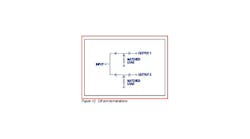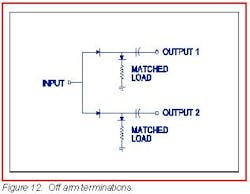PIN-diode switches come in many shapes, sizes, and operation ranges. When planning a project, system-level designers need to account for several to thousands of these switches. Thus, a detailed knowledge of the parameters of a PIN-diode switch becomes paramount, since they form part of the device’s signal chain. To illuminate the most essential parameters, American Microwave offers an application note titled “How To Specify Pin Diode Switches.” The document expounds upon the six key, and five secondary, PIN-diode parameters that are required to specify PIN diodes within a system.
Of the hundreds of device parameters, the six key PIN-diode switch specs include type, operating frequency band, insertion loss, isolation, switching speed, and power handling. Switch type can range from single to multiple poles and from single-throw to 32 throws. The more complex a switch, the less common it will be in the marketplace. According to the note, this factor also applies to the frequency range of operation. While lower-frequency video and high-frequency switches are frequently found, extreme-microwave and millimeter-wave PIN-diode switches tend to be less available.
Insertion loss and isolation are the electrical properties associated with quality of design and manufacture. Insertion loss depends on two factors: the conductor/transmission-line interconnect within the switch, and how well the signal paths are matched. In contrast, isolation depends on the series or shunt connection of the switch. A variety of techniques exist specifically for maximizing isolation at broadband or narrowband frequencies.
Two parameters at odds with each other are switching speed and power handling. Handling greater power requires a larger device. Increased size, in turn, multiplies the parasitics that lower switching speed.
The note breaks down the key specifications further by detailing five secondary parameters: logic-compatible driver type/speed, phase tracking, off-arm terminations, intercept point, and video transients. These parameters require a grasp of the switch’s application, the specific requirements of its higher-level assembly, and compliance requirements. Many of these parameters demand tradeoff considerations. As a result, the note recommends a study of those tradeoffs in accordance with the value of the specification within the application.
American Microwave Corp., 7309-A Grove Rd., Frederick, MD 21704, (301) 662-4700

